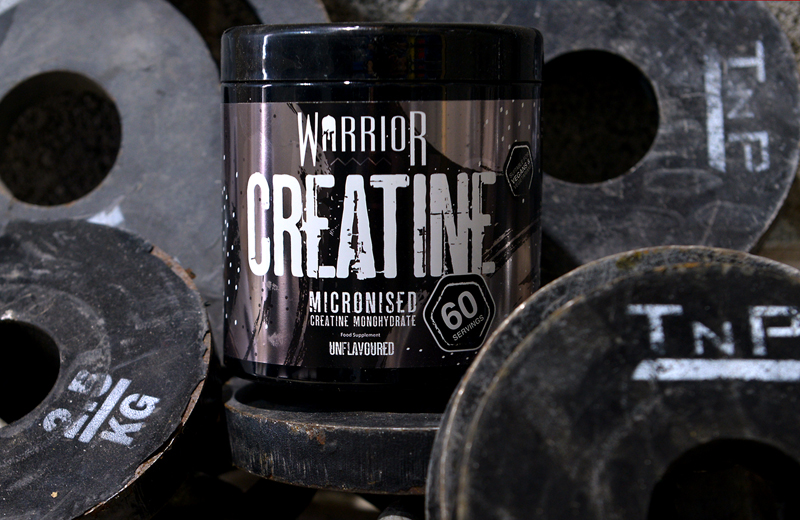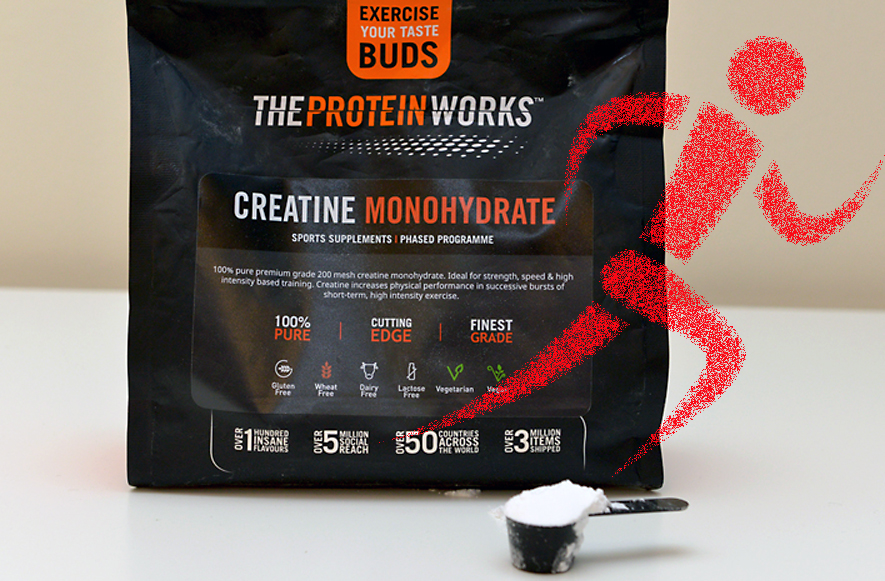With the abundance of antibacterial soaps, wipes, and even anti-microbial fabrics, most people are aware that bacteria can harm us. But what about friendly bacteria and in particular, what can they do for athletes? Amanda Carlson looks at the latest evidence.Probiotics are considered to be ‘good’ bacteria and have been gaining popularity and notoriety among the general public. Europeans have accepted the potential health benefits of these ‘good bacteria’ for some time now. However, the use, visibility and availability of probiotics is a rising trend generally.
Probiotics may not improve sport performance directly, but the secondary health benefits of probiotics, which include enhanced recovery from fatigue, improved immune function and the maintenance of a healthy gut, can improve general wellbeing, which then in turn could improve performance on the field of play (1). The purpose of this article is to break down what probiotics actually are, how they work, why people use them, and how some recent studies may lead to more research to fill an obvious void.
Probiotics, prebiotic and synbiotics
As with many nutritional concepts, what we see on the shelves and the simplified concepts expressed in the media do not explain the complete story. The same holds true for probiotics. The probiotic concept states that consuming the right types of microbes can support the important roles that intestinal microbes play in human health (2). Probiotics are defined as ‘live microbial food ingredients that are beneficial to the health of the host’, and the word itself is derived from the Greek word meaning ‘life’ (3).Probiotics have a counterpart, prebiotics, which are defined as food ingredients that promote the growth or activity of a limited number of bacterial species for the benefit of host health (4). Prebiotics are nondigestible food ingredients that benefit the host by selectively stimulating the growth and/or activity of one or a limited number of bacteria in the colon. Beneficial prebiotics are frequently used in combination with probiotics to stimulate their numbers and their overall functionality. When probiotics and prebiotics are mixed together they form a synbiotic relationship, meaning that the two are working together to create the best possible results.
The human intestinal tract is colonised by an estimated 400 different bacterial species. Although the adult bacterial flora in the colon is generally stable in composition, age, nutritional requirements, immune status, antibiotic use, stress, alcohol use, acidity, transit time and presence of material in the gut can disrupt this delicate balance. The consumption of probiotics can help to restore balance by re-establishing correct acidity and producing different antimicrobial substances. Probiotics exert their main activities on the small intestine. Prebiotics can enhance the benefits of probiotics by helping them compete with harmful bacteria and by complementing overall activity because prebiotics work mainly in the large intestine (2).
Probiotics
The lactic acid bacteria (LAB), including Lactobacillus and Bifidobacterium are the most common probiotics and are mainly found in foods. However, Enterococcus and Escherichia are also used, but typically only in supplements. LAB is frequently used by the food industry to convert carbohydrates to lactic acid. It is this process that results in the sour taste of foods such as yogurt and in the lowering of pH (increase in acidity) to reduce spoilage.Lactobacilli is found naturally in many fermented foods, including yogurt, sauerkraut, kefir, yakult, cabbage dimchee, and the soybean products miso and tempeh. I always recommend food first and supplement second; however, getting an adequate amount of live bacteria into the diet can be difficult because the commercial availability of these foods is quite limited. Also, many fermented foods do not contain live cultures as finished products because modern food processing approaches designed to improve product consistency or shelf life decrease the amount of potentially helpful microbes.
Dairy products such as yoghurt and cheeses are the largest category of foods that contain live cultures; however, most contain starter cultures and then have additional bacteria (lactobacillus and bifidobacterium) added to the product. These products are also confusing because the low level of probiotics may be masked by the high levels of starter bacteria. These traditionally live active culture foods may not be as potent a source of probiotics as once thought. Therefore, your best bet when it comes to foods and good bacteria are going to be dairy products with the additional bacteria added back (2,6).
The health effects resulting from taking probiotics is considered to be strain specific (see table 1). At this point in time it’s very difficult to generalise about a minimum dose of probiotics needed for an effect; however, there are no studies that show any positive effects below 100 million (108) colony forming units (cfu) per day and there are recommendations up to 1.8 x 1012 cfu. In addition to the difficulty in generalising about dosing, maintaining the viability of a probiotic can be challenging. Probiotics are sensitive in a strain-dependent manner to heat, moisture, acidity and oxygen. In general, microbes will survive better at lower temperatures, but there are many properly stabilised non-refrigerated products on the market. There are also different types of coating technologies available to companies developing probiotics. These technologies help to improve probiotics’ survival in our highly acidic stomachs.
Prebiotics
Prebiotics are food for bacterial species that are considered beneficial for health and wellbeing. Specifically, Lactobacillus and Bifidobacterium types seem to have the ability to use prebiotic fibre as food. There are a variety of foods that provide fermentable fibre that helps with colon health but prebiotics themselves are specialised ingredients targeted to enhance specific bacteria, their fermentation end products, and possible health effects (2). These include:Fructans – a group of naturally occurring complex sugars called oligosaccharides and fructooligosaccharides and which are found in onions, bananas, wheat, artichokes, garlic and other wholefoods. They are also extracted from chicory or manufactured from sucrose for commercial products;
Resistant starches – found in raw potatoes, unripe fruits like bananas, and in cooked and cooled starchy products. Resistant starch is also added to many products, including cereals and breads, in the form of ‘inulin’. Inulin is added to increase the fibre content and sometimes to reduce calorie intake (because it’s indigestible).
If you’re considering taking probiotics, you should also make sure that you have the ‘fuel’ for them to work on by ensuring you have plenty of fibre in your daily diet.
Probiotics for the athlete?
The incidence of probiotic use by athletes is not currently known; however, there has been a steady rise in probiotic intake in the US over the last 10 years. With the abundance of studies done on probiotics and different aspects of health, there is a noticeable void in the literature when it comes to probiotics and performance. Instead of looking directly for performance enhancing effects of probiotics we can look instead at what prevents the athlete from training and performing at their best.Researchers from South Africa (7) have done a great job explaining the overall hypothesis of overtraining syndrome. Overtraining occurs in a response to excessive training/competing without enough time to rest and recover. This results in tissue trauma with associated chronic inflammation and a release of cytokines (signalling cells associated with a challenged immune system).
This increase in cytokines is linked to behaviours such as depression, loss of appetite and sleep disturbances (see figure 2). Furthermore, these immune changes seem to leave athletes more susceptible to developing infection while concurrently increasing the incidence of allergies in those who are genetically predisposed (8).
Pulling it all together
Even though there is a lack of evidence surrounding probiotics and athletic performance enhancement, there are studies that show probiotics improve markers of immune function(9), increase natural killer cell activity (a certain type of immune cell)(10) and improve gastrointestinal health(11), all of which could be presented as another potential way to help the overtrained athlete.One of the most interesting studies comes out of Australia (9). This group recognised that fatigue and impaired performance in athletes has been loosely linked to overtraining, and that reduced concentrations of IgA (a large protein antibody molecule important to the immune system) in the saliva and increased shedding of the Epstein Barr virus (EBV – the virus associated with glandular fever) have been associated with intense training in athletes. They wanted to determine whether athletes presenting with fatigue and impaired performance had an immune defect relevant to defective containment of the EBV infection and whether a probiotic (Lactobacillus acidophilus) could enhance immunity and reverse any detected abnormality.They discovered that fatigued athletes had clinical characteristics consistent with the reactivation of EBV infection and had significantly less secretion of interferon (IFN – proteins that help immune function) from immune cells in the blood. They had the athletes take 20,000,000,000 (20 billion) cfus of L acidophilus per day for one month. After one month of taking the probiotics, the secretion of IFN from T cells had significantly increased to levels found in healthy control athletes. There was also a significant increase in salivary IFN concentrations in healthy controls. This revolutionary study is the first evidence of a T cell defect in fatigued athletes and the reversal following probiotic therapy. In the real world, this shows that for the overtrained athlete, probiotics, specifically the aforementioned dose and strain, may be beneficial in helping both overtrained and healthy athletes.
Another study by Finnish scientists evaluated the effect of probiotic supplementation on respiratory infections and gastrointestinal symptoms in marathon runners (11). These athletes were not elite athletes, but were undergoing significant training load associated with their event. In this study Lactobacillus rhamnosus GG (LGG) was given in the form of a milk-based fruit drink containing a total of 40,000,000,000 cfus of LGG. The subjects drank this mixture for three months but the results of this study revealed no significant effects of the probiotic supplementation.
The mean number of healthy days was 79.0 in the LGG group in comparison to 73.4 days in the placebo group; however, this difference was not large enough to be considered significant. There was no difference in the number of respiratory infections or in GI episodes (a drop in the immune cell count in the gastrointestinal system) between the two groups. However, the duration of the GI episodes was shorter in the LGG group (2.9 days vs 4.3 days) during training and post-race. Although there was no significant difference, there was a clinical difference and advantage shown with the probiotic supplementation. Why were these results less positive? Maybe if a different strain were chosen, the results would have been more significant. Also, these subjects were healthy and showed no sign of overtraining. It would be interesting to study the same strain in an overtrained population.
Conclusion
Taking probiotics may improve health, which in turn could improve performance. However, when you delve into the research on probiotics, there is little linking it directly to athletic performance leaving a grey area when it comes to recommendations. What is true, however, is that emerging research is showing that probiotics can help the athlete improve their overall health, enhance immune function and even restore a suppressed immune function as a result of overtraining, and it’s in these circumstances that athletes may benefit from probiotic use.References
1. Cur Sport Med Rep. 2008; 6: 269-273.
2. JADA 2008; 108: 510-521.
3. Br J Nutr 2006; 80: S141-S171.
4. J Nutr 1995; 125: 1401-1412.
5. J Biotec 2000; 84, 197-215.
6. Breidt (2007). Fermented Vegetables. In D. MP., Food Micorbiology: Fundamentals and Frontiers. 3rd Edition (pp. 783-793). Washington DC: ASM Press.
7. J Strength Cond; 2004; 18 (1) 185-193
8. J Str Cond Res 2004; (18),1: 185-193.
9. Br J Sports Med 2006; 40: 351-354.
10. Sports Med Training Rehabil 2000; 9: 209-223.
11. Int J Spor Nutr Exerc Metab, 2007: 17: 352-363.










